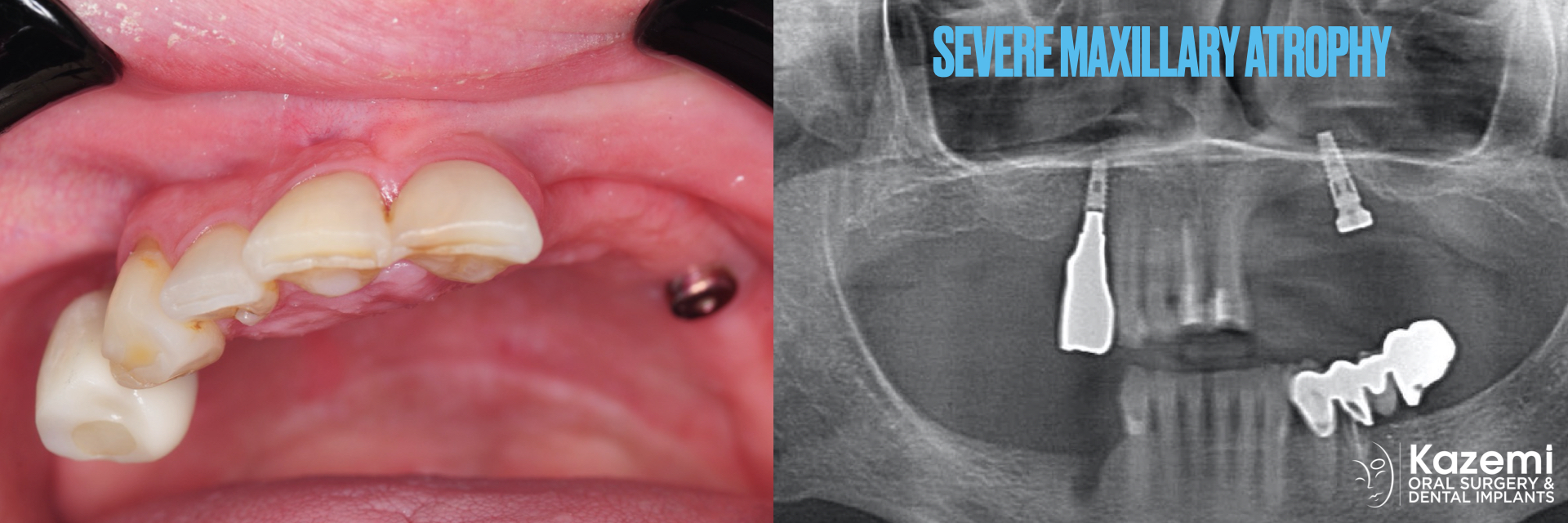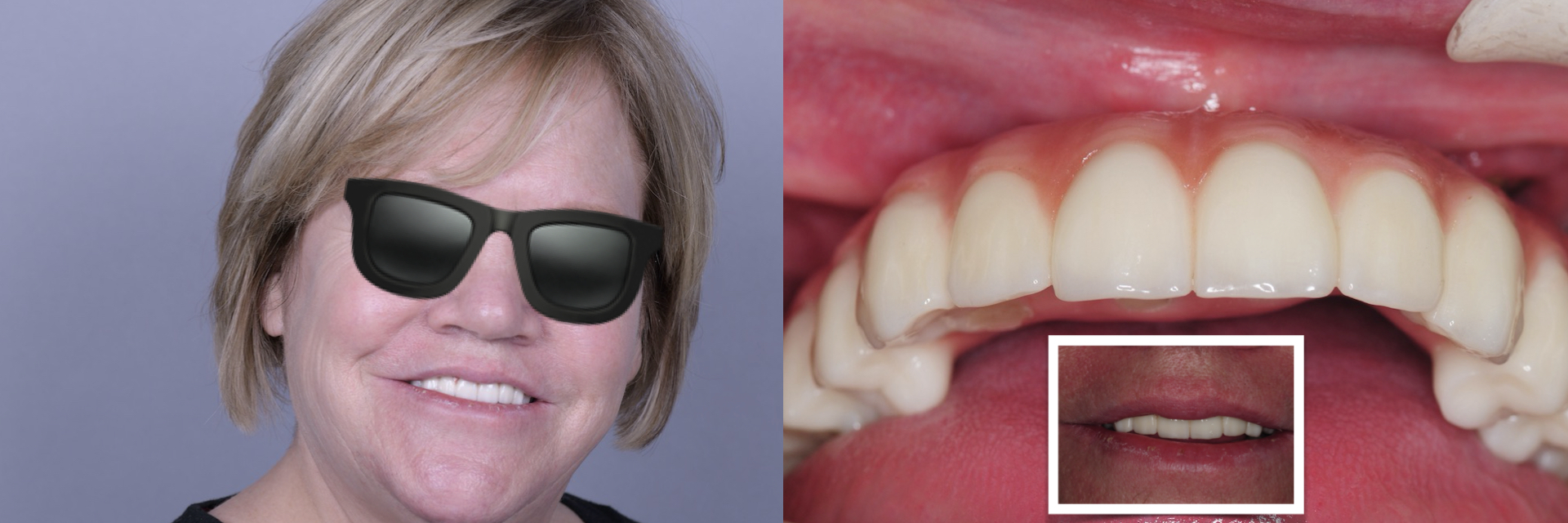 Severe bone loss in the upper jaw can result from periodontal disease, trauma, pathology, or prolonged use of conventional dentures. In such patients, there is inadequate bone for support of conventional dental implants. For many, it may not be possible or desired to go through extensive bone grafting procedures to restore the missing bone. But there is a solution for such patients: Zygomatic or Pterygoid dental implants.
Severe bone loss in the upper jaw can result from periodontal disease, trauma, pathology, or prolonged use of conventional dentures. In such patients, there is inadequate bone for support of conventional dental implants. For many, it may not be possible or desired to go through extensive bone grafting procedures to restore the missing bone. But there is a solution for such patients: Zygomatic or Pterygoid dental implants.
 There are two anatomical areas that can provide great support for dental implants and full-arch restoration in the upper jaw bone. The first is the Zygoma (the cheek bone). Specifically designed Zygomatic dental implants can be placed in this site either on one or both sides as necessary to provide the sufficient support for the back side of the teeth. The second area is known as the Pterygoid which is located right behind the upper jaw. Pterygoid bone is not as dense as Zygomatic bone, however it does offer another great site for support of Pterygoid dental implants. In some circumstances Zygomatic and Pterygoid implants can be used together for added support. Two conventional dental implants in the front of the upper jaw bone are also placed providing support for the front section of the teeth.
There are two anatomical areas that can provide great support for dental implants and full-arch restoration in the upper jaw bone. The first is the Zygoma (the cheek bone). Specifically designed Zygomatic dental implants can be placed in this site either on one or both sides as necessary to provide the sufficient support for the back side of the teeth. The second area is known as the Pterygoid which is located right behind the upper jaw. Pterygoid bone is not as dense as Zygomatic bone, however it does offer another great site for support of Pterygoid dental implants. In some circumstances Zygomatic and Pterygoid implants can be used together for added support. Two conventional dental implants in the front of the upper jaw bone are also placed providing support for the front section of the teeth.
 For optimal accuracy and precision, computer-assisted planning and bone-borne surgical guides are used for placement of all dental implants. An immediate fixed provisional restoration can often be delivered on the same day followed by the final restoration in 3-4 months.
For optimal accuracy and precision, computer-assisted planning and bone-borne surgical guides are used for placement of all dental implants. An immediate fixed provisional restoration can often be delivered on the same day followed by the final restoration in 3-4 months.
 Elimination of extensive bone grafting procedures and the reliability of Zygomatic / Pterygoid dental implants offer great benefits to patients with extensive upper jaw bone loss, minimizing the number of surgical procedures, cost, and overall treatment time.
Elimination of extensive bone grafting procedures and the reliability of Zygomatic / Pterygoid dental implants offer great benefits to patients with extensive upper jaw bone loss, minimizing the number of surgical procedures, cost, and overall treatment time.